Home 10
Creation date / 2020 / All / 14

-
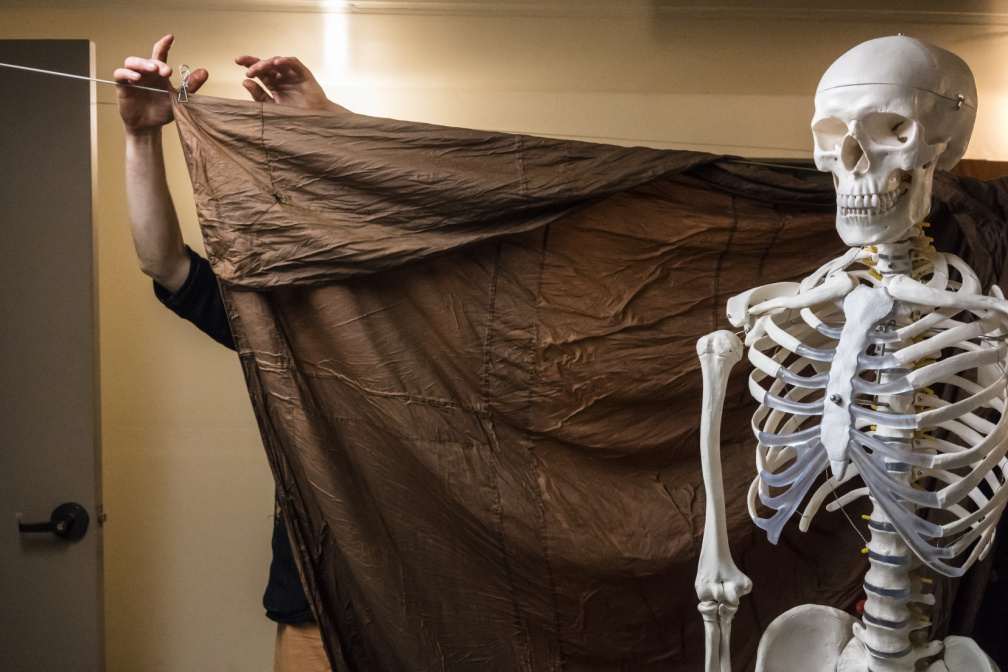 Having sewed and dyed a formal robe, novice Dhammavaro hangs the cloth to dry in front of a skeleton used for contemplation. A candidate for monkhood at Abhayagiri must sew and dye a set of three robes before his ordination ceremony.
Having sewed and dyed a formal robe, novice Dhammavaro hangs the cloth to dry in front of a skeleton used for contemplation. A candidate for monkhood at Abhayagiri must sew and dye a set of three robes before his ordination ceremony. -
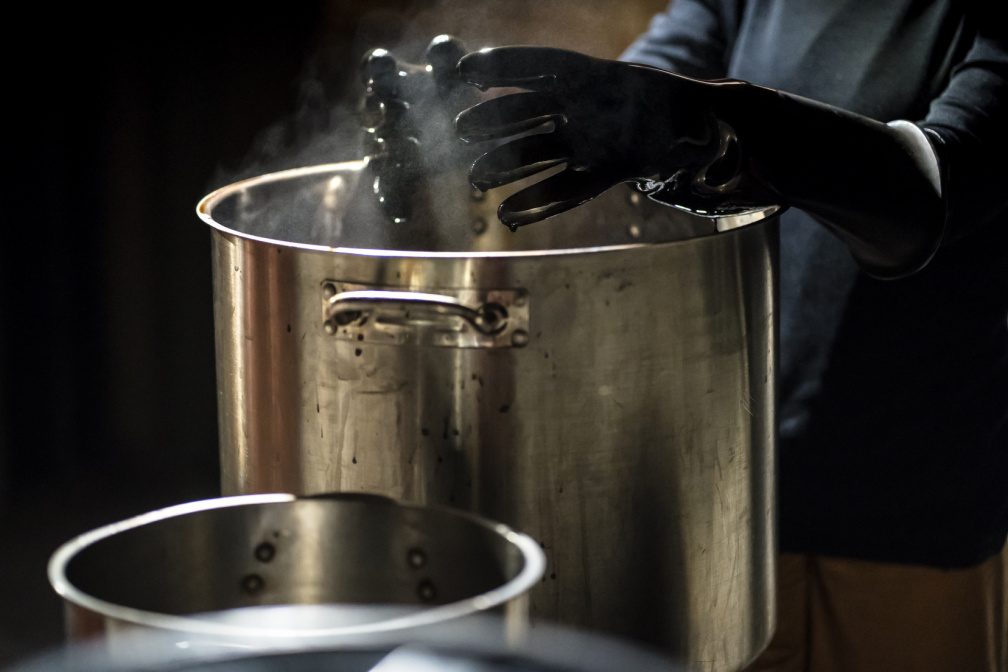 Dhammavaro wears heavy gloves to manipulate cloth soaking in the boiling reduction bath, which helps to saturate the garment with dye. Beginning with two 40-gallon barrels of madrone bark, the resulting dye would fill only a single, 10-gallon pot.
Dhammavaro wears heavy gloves to manipulate cloth soaking in the boiling reduction bath, which helps to saturate the garment with dye. Beginning with two 40-gallon barrels of madrone bark, the resulting dye would fill only a single, 10-gallon pot. -
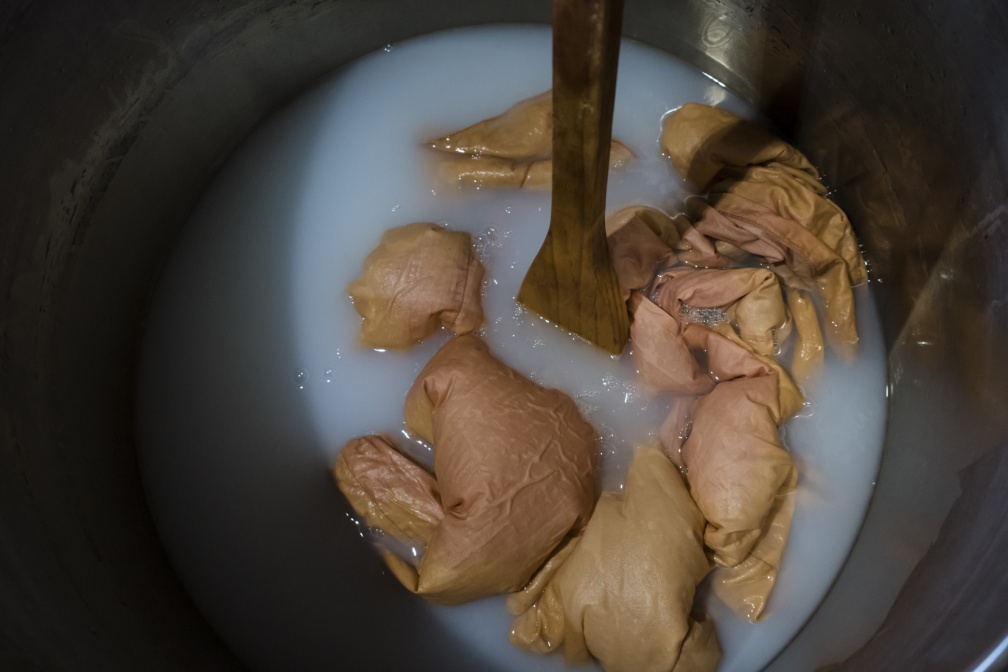 A robe soaks in the mordant bath, where tone begins to appear on the cloth.
A robe soaks in the mordant bath, where tone begins to appear on the cloth. -
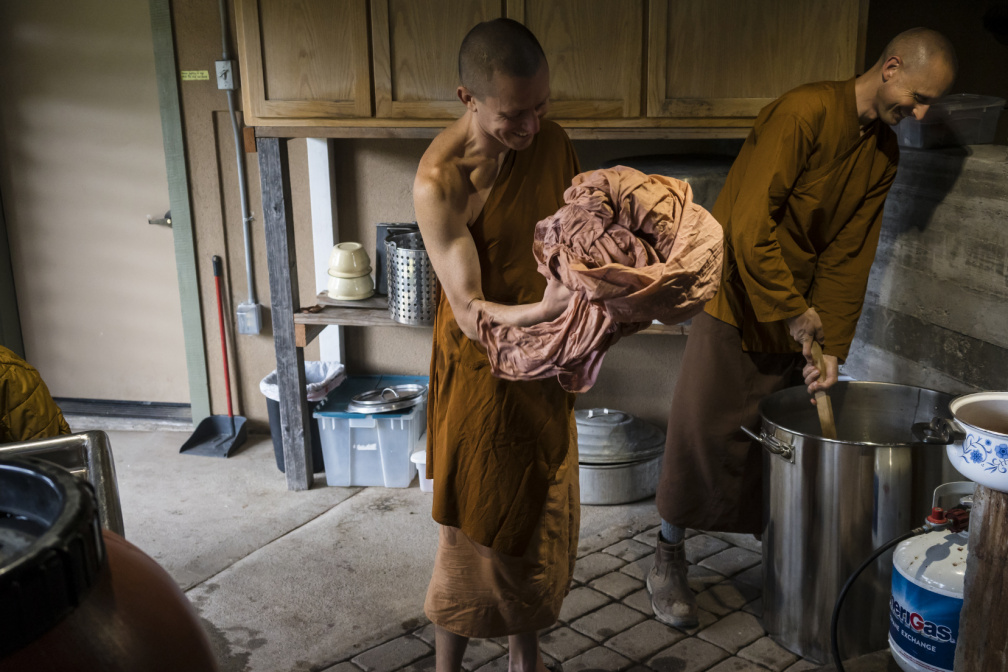 Dhammavavro applies mordant to a robe alongside Ajahn Ñaniko, the abbot of Abhayagiri, who dyed a robe at the same time. It's common for a novice to have dedicated help through this process from a more senior monk.
Dhammavavro applies mordant to a robe alongside Ajahn Ñaniko, the abbot of Abhayagiri, who dyed a robe at the same time. It's common for a novice to have dedicated help through this process from a more senior monk. -
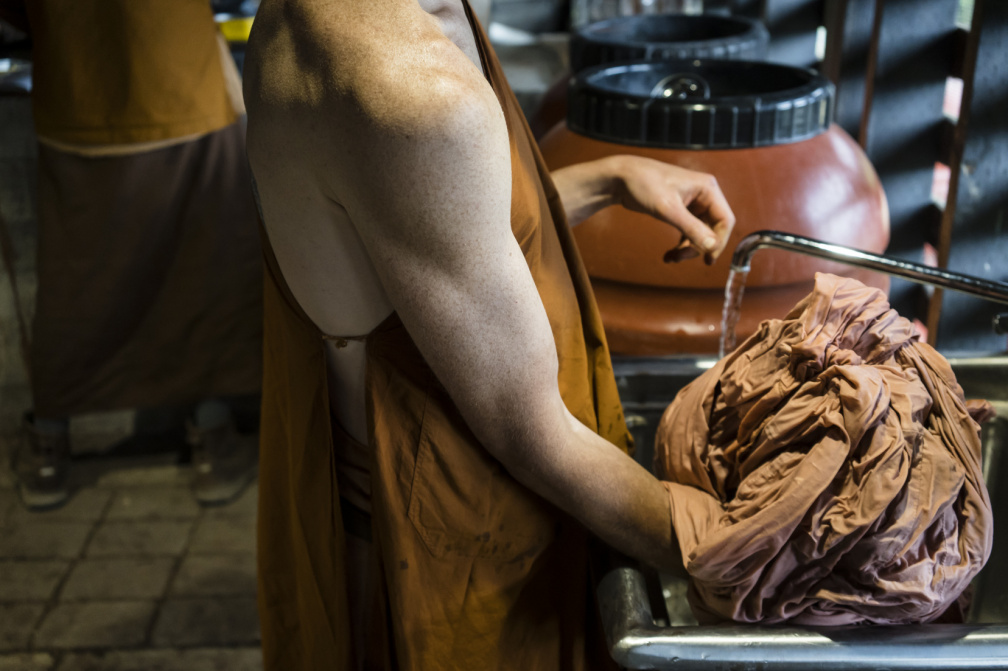 In the first stage of dyeing, the cloth is soaked in mordant - a solution which will help dye adhere to the garment. After rinsing off excess mordant, the cloth has a slight coloration, seen here.
In the first stage of dyeing, the cloth is soaked in mordant - a solution which will help dye adhere to the garment. After rinsing off excess mordant, the cloth has a slight coloration, seen here. -
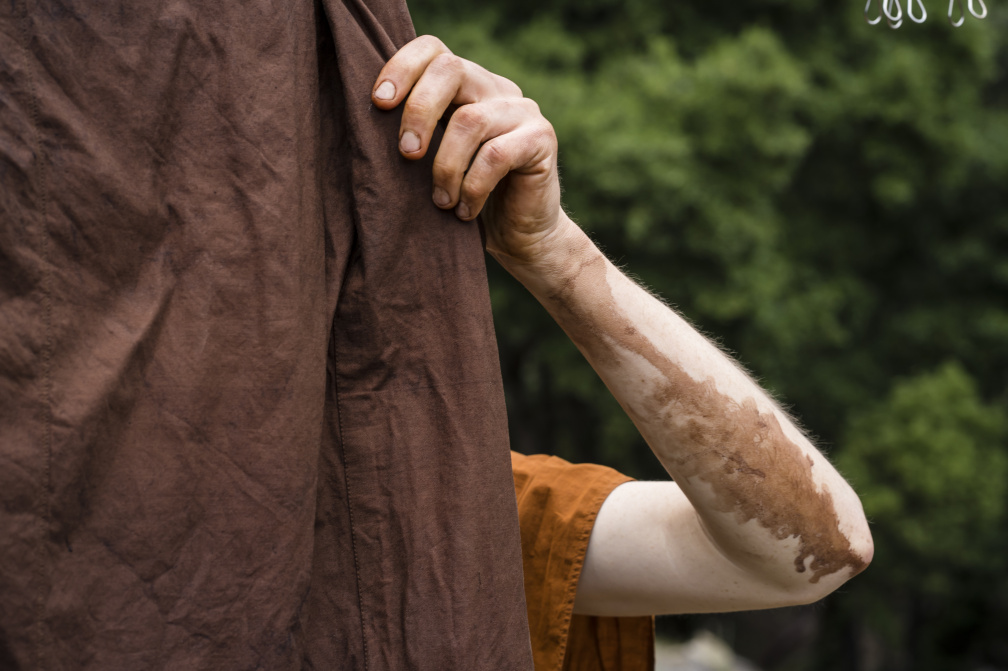 Dye drips from Dhammavavro's arm as he hangs his jiworn from a clothesline outside the monks' utility building.
Dye drips from Dhammavavro's arm as he hangs his jiworn from a clothesline outside the monks' utility building. -
 The robe is refolded over the clothesline in the second stage of flipping to avoid drip marks and ensure even color saturation.
The robe is refolded over the clothesline in the second stage of flipping to avoid drip marks and ensure even color saturation. -
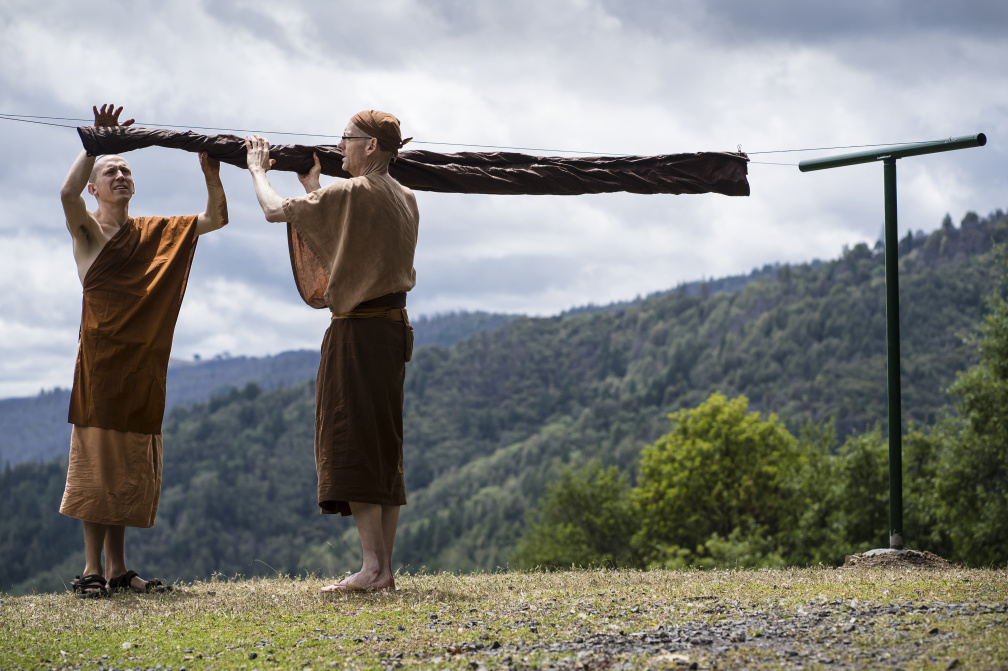 In the third stage of flipping, the dye is massaged into the cloth with the hands so that it remains in the center of the robe.
In the third stage of flipping, the dye is massaged into the cloth with the hands so that it remains in the center of the robe. -
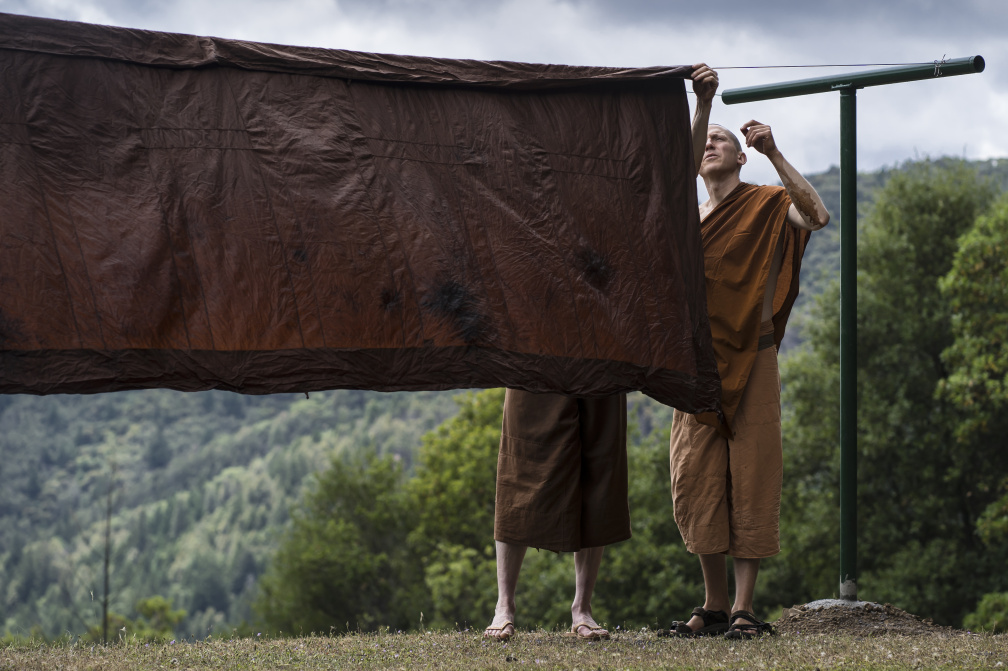 In a process developed at the time of the Buddha, a robe will be flipped in three steps so the natural dye settles evenly on the cloth. This rotation also prevents "racing stripes" as dye drips down the sides.
In a process developed at the time of the Buddha, a robe will be flipped in three steps so the natural dye settles evenly on the cloth. This rotation also prevents "racing stripes" as dye drips down the sides. -
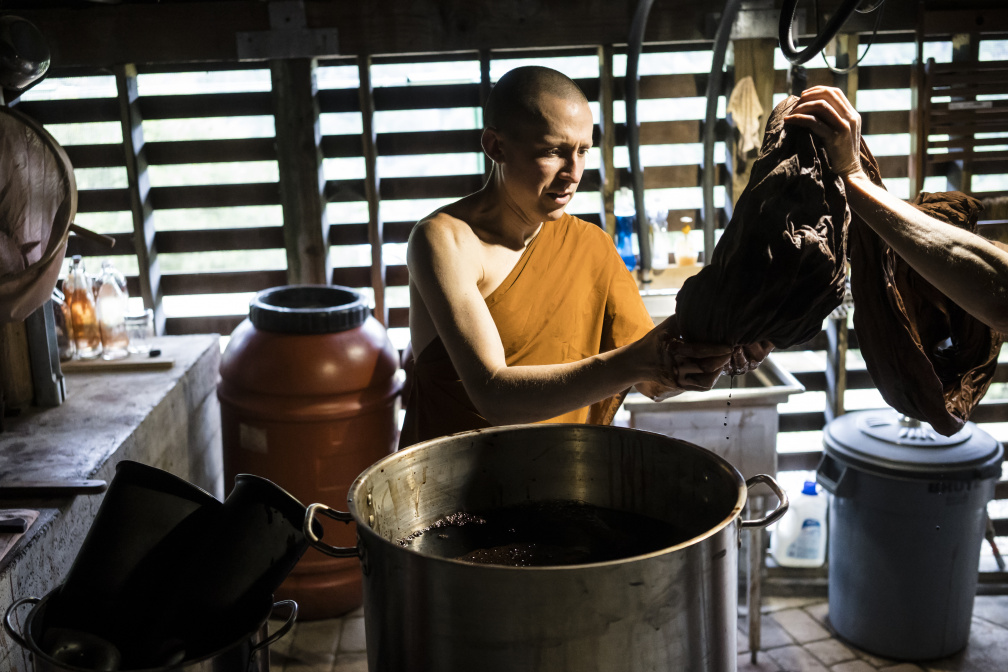 Dhammavavro pulls his jiworn from the final dye solution, where it soaked for two hours. The number and duration of baths determine color density and uniformity in a robe - often cloth must be saturated in dye many times for a rich and even color.
Dhammavavro pulls his jiworn from the final dye solution, where it soaked for two hours. The number and duration of baths determine color density and uniformity in a robe - often cloth must be saturated in dye many times for a rich and even color.